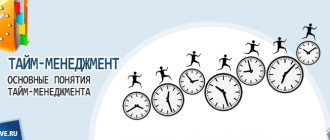The psychology of human behavior and its study is a very complex but interesting process. Why is it pleasant and easy to communicate with one person, while difficult and tense with another? There is a desire to quickly end the conversation and leave, despite the fact that he is a good friend who is always courteous and polite.
We intuitively understand when a person is sincere and when he is disingenuous. That is why we experience conflicting feelings: on the one hand, the person has not done anything wrong, but on the other, there is an inner feeling that tells us that we should stay away from him.
The described situation of interpersonal relationships is explained in psychology.
Biological context
Biology is very closely related to the issue described in this article. Social behavior is not something that is unique to humans. It arose as a result of long-term natural selection. Although there is some disagreement about how to precisely define behavior in a biological context, one general interpretation, based on a meta-analysis of the scientific literature, states that “behavior is the internally coordinated responses (actions or inactions) of entire living organisms (individuals or groups) to internal and/or external incentives.”
A broader definition of behavior, applicable to plants and other organisms, is similar to the concept of phenotypic plasticity. It describes it as a response to an event or environmental change during a person's life that is different from other physiological or biochemical changes and occurs more quickly. At the same time, it excludes changes that are the result of development (ontogenesis). Behavior may be innate or learned from the environment. The principle of a behavior is whether it is dependent on the environment or is externally learned. That is, it is influenced by both the environment and the environment of other creatures and the will of the subject himself.
What is behavior? It can be considered as any action of the organism that changes its relationship to the environment. It provides access beyond the body into the environment.
Psychology of addictive behavior
In psychology, as the science of human behavior, addiction is called attachment to someone or something. It is unacceptable from the point of view of moral or social norms, it threatens health and causes suffering to the person himself.
Addiction harms society and individuals, it limits their development and leads to all sorts of mental illnesses.
More people die from addiction than from crime and war combined. It manifests itself as an escape from problems into an illusory ideal world. Gradually, a person ceases to control his behavior, emotions, thoughts. His entire existence is reduced to an object of dependence, which gradually completely destroys him as a person.
Recently, the spread of drug and alcohol use among young people has become a national disaster. Therefore, the attention of psychologists, psychiatrists, sociologists, narcologists, and lawyers has been drawn to this problem.
Dependent behavior is also called addictive - it is a type of deviant behavior, that is, it is the desire to escape from reality by changing one’s mental consciousness. Behavioral psychology views this as a destructive attitude towards oneself and society.
Addictive behavior is alcoholism, drug addiction, smoking, hypersexuality, gambling, computer addiction, addiction to rich food, shopping.
Dependence has varying degrees of severity: from normal to severe.
Why do some people develop this strong and irresistible attachment, what explains the impulsiveness and insatiability of desire? The answers to these questions are of great importance for society and for each individual.
Ecology
Behavioral ecology is the study of the evolutionary basis of animal behavior due to environmental pressures. Behavioral ecology arose from ethology after Niko Tinbergen outlined four questions that should be considered in the study of animal behavior, among which are proximate causes, ontogeny, survival, and phylogeny.
If an organism has a trait that provides a selective advantage (that is, has adaptive value) in its environment, then natural selection will favor it. Adaptive meaning refers to the expression of a trait that affects fertility, as measured by an individual's reproductive success. Adaptive traits are those that produce more copies of a person's genes in future generations. Maladaptive traits are those that cause you to produce less. For example, if a bird that can sing louder attracts more mates, and singing loudly is an adaptive trait for that species because a louder bird is more common than less loud birds, thereby passing the louder genes into future generations.
Hierarchy of equality
Animal families exhibit varying degrees of hierarchy. The individual is looking for a specific reaction among its fellows in order to become a leader.
If it were not possible to achieve emotions of recognition from family members, then the individual would not bother. It turns out that if an individual seeks the attention of others, then it tries by any means to become a leader, that is, it achieves its goals through bellicose behavior.
People's behavior is almost the same - as soon as those around them provide their emotions with recognition, one of the members of society becomes a leader. For example, emotions of recognition go to authoritative people who have somehow attracted the attention of society. People brought up in a strict home hierarchy display aggressive behavior towards members of their family or towards weaker people.
The Science of Survival
Individuals always compete with other individuals for limited resources, including food, territory, and mates. Conflict occurs between predators and prey, between rivals and comrades, between siblings, partners, and even between parents and offspring. Roles of behavior are a special niche that the subject occupies in this permanent conflict with everyone.
The meaning of social behavior depends in part on the animal's neighbors. Behavior is something that is often consistent with surrounding members of the same species. For example, the more likely a rival male is to abandon a threat, the more value the second male gains from the threat he supposedly poses. However, to protect the group, males can also act as a team. When a population exhibits a series of interacting social behaviors such as this, it can develop a stable pattern known as an evolutionarily stable strategy (or ESS). This term, derived from economic game theory, became prominent after John Maynard Smith (1982) recognized the possible application of the concept of Nash equilibrium to model the evolution of behavioral strategies.
Forms of human behavior
Based on socionics and Dellinger’s theory of psychoforms, forms of human behavior were identified:
- Dominant is the behavior of leaders, realists, and practitioners.
- Creative - characteristic of people with abstract-imaginative thinking. They rely more on intuition, have ingenuity, premonition, imagination, and are completely divorced from reality.
- A harmonizing form of behavior is characteristic of people who are endowed with empathy, ethics, and subtle diplomacy.
- Normalizing is the behavior of logical people capable of analyzing facts.
Usually people have a combination of two types of behavior, one of which is more pronounced.
Human society
Human behavior is the responses of people or groups of people to internal and external stimuli. It refers to the array of every physical action and observable emotion associated with people. And also with humanity. Although specific personality and temperament traits may be more consistent, other behaviors will change as a person moves from birth to adulthood. In addition to patterns dictated by age and genetics, behavior is something that is driven, in part, by thoughts and feelings. This is an understanding of the individual psyche, identifying relationships and values among other things. Social behavior is a subset of human behavior that examines the significant mutual influence of social interaction and culture. Additional influences include ethics, environment, authority, rapport, hypnosis, persuasion, and coercion. Moral behavior is that which is consistent with social ethics and morality.
Errors and conditions
It is easy to observe the behavior of teenagers who, with their not always adequate actions, try to impress, show their specialness, or attract the attention of others.
If a person is deprived of freedom of action, where a civilized way of achieving social recognition is not available to him, then he, like his wild ancestors, tries to gain the emotions of recognition through his aggressive behavior.
Scientists conducted many experiments with which they tried to explain the behavior of people in various situations. Psychologist Milgram proved that not only in extreme conditions, even the most principled person can behave inappropriately under the pressure of authority.
Social norms
The behavior of people (and other organisms, or even machines) falls within a range, some of which are common and some of which are unusual. That is, some types of behavior are acceptable forms of behavior, and some are unacceptable. In sociology, it generally includes actions that have no meaning, are not directed at other people, and therefore all basic human actions. Behavior in this general sense should not be confused with social behavior, which is more advanced social action specifically directed towards other people. Acceptability of behavior depends largely on social norms. And it is regulated by various means of social control. Human behavior is studied by the specialized academic disciplines of psychiatry, psychology, political science, sociology, economics and anthropology. Standards of behavior are what must be observed when living in society.
A person's behavior is felt throughout his life. It involves acting on various factors such as genetics, social norms, religious belief and relationships. Behavior is influenced by certain traits inherent in each person. The characteristics vary from person to person and can produce different actions or behaviors depending on each individual. Social norms also influence behavior. Due to the inherent conformist nature of human society as a whole, people are pressured to adhere to certain rules and to follow rules for exhibiting certain behaviors in society. Which determines the interaction of people. Different types of behavior are considered acceptable or unacceptable in different societies and cultures. The core belief can be perceived through that person's religion and philosophy. It shapes the way a person thinks. And this, in turn, leads to different behavior among people. Attitude can be defined as "the degree to which a person has a favorable or unfavorable evaluation of the behavior in question." A person's attitude is basically a reflection of the behavior he or she will portray in specific situations. Thus, human behavior is greatly influenced by the habits we use on a daily basis. Deviant behavior is something that receives a negative assessment from society.
Deviant behavior and psychology
The phenomenon of such behavior is so complex and widespread that there is a separate science to study it - deviantology, which arose at the intersection of criminology, sociology, psychology and psychiatry.
1. The concept of “deviant” and social behavior in psychology
“Deviation” from Latin means “deviation”. In psychology, behavior that deviates from the norms accepted in society is called deviant or asocial. That is, it is sustainable human behavior that causes real harm to people and society. It is harmful both for others and for the deviant himself.
The psychology of deviant behavior studies such forms of deviation as suicide, crime, prostitution, drug addiction, vagrancy, fanaticism, alcoholism, and vandalism.
Such behavior is associated with malice, violence, aggression, destruction, therefore society has conditionally or legally introduced penalties for violators of social norms, he is isolated, treated, corrected or punished.
2. Personality of the deviant, his psychology, behavioral characteristics
Science does not study how and where a person committed an offense; it is interested in general patterns and personality characteristics.
Causes and sources of antisocial behavior:
- Physiological: genetic predisposition to aggression; diseases of the endocrine system; chromosomal abnormalities.
- Public: imperfect legislation; social inequality; media propaganda of an antisocial lifestyle; hanging “labels”; negative assessments given by relatives.
- Psychological reasons: internal conflicts between conscience and desires; special character; mental disorders; dysfunctional family relationships; too conservative, strict, cruel upbringing in childhood.
The character of deviants often contains such traits as conflict, negativism, dependence, anxiety, aggressiveness, and hostility. They often deceive and do it with pleasure; they like to shift responsibility and blame onto others.
A person’s deviant behavior leads to his social disadaptation, that is, he does not adapt to the conditions of society and, as a result, goes against it.
A child’s behavior cannot be antisocial, since self-control in children under 5 years of age is not yet developed and the process of adaptation to society has just begun.
The most dangerous period in terms of the possibility of developing deviation is between the ages of 12 and 20 years.
3. How to deal with problem behavior?
Most often, people with this behavior end up seeing a psychologist in prisons, in children's colonies, and in addiction treatment centers. Society is engaged in the prevention of deviations in hospitals, schools, dysfunctional families, through the media, but the problem is that there is no individual approach, and a person cannot cope with it on his own. But he may realize the need to change his lifestyle and seek help from specialists.
The influence of genetics
Long before Charles Darwin published On the Origin of Species in 1858, animal breeders knew that behavioral patterns were somehow influenced by inheritance from parents. Studies of identical twins compared with less closely related individuals and children raised in foster care have helped scientists understand the influence of genetics on human behavior. The study of human behavioral genetics is still evolving steadily using new techniques such as genome-wide association studies.
Psychology of women
The psychology of the fair half of humanity is based on several circumstances:
- Character type. Most women are sanguine. They are active, they are characterized by mood swings, they know how to manage feelings, and subordinate circumstances to their desires.
- Upbringing is what parents instilled in a little girl that determines her actions and behavior.
- Experience - if she has faced negativity all her life, she stops trusting people and becomes lonely. Her behavior is different from the standard.
The psychology of a woman’s behavior is determined by her attitude towards a man. Psychologists believe that women have a natural ingenuity that helps them in life. But they primarily direct their ingenuity to relationships with men. For example, they try to appear strong and independent, they always have some hobbies and hobbies, often planned personal time, and so on.
Role of the group
Social norms, often the unspoken rules of a group, shape not only our behavior but also our relationships. An individual's behavior varies depending on the group of which he is a part, as well as the characteristics of the society that allow its norms to greatly influence society. Without social norms, human society will not function, as is evident in some countries today. People would have to be more abstract in their behavior as there would be no pre-tested "normal" standardized way of life and people would be able to make many more choices for their own personal good. However, the institutionalization of norms is inherent in human society. Perhaps as a direct result of the desire to be accepted by others, which causes people to manipulate their behavior in order to “fit in” with others. Depending on their nature, norms can impact different segments of society either positively (e.g., eating, dressing warmly in winter) or negatively (e.g., racism, drug use).
Hierarchy of differences
What distinguishes people from animals is that they can gain recognition in a variety of ways. A person can achieve emotional support, that is, the respect of others, by demonstrating his talents. This develops self-esteem in an individual, since it is impossible without the recognition of the society that surrounds them.
It is on these principles that modern society lives. All that remains to be added is that a person who achieves emotional recognition from society begins to own the opinion of this society, and therefore becomes an authority who can subsequently influence the behavior of society as a whole.
People look for any opportunity to gain respect, and if they fail to gain recognition for their own abilities, then any means are used to achieve the goal.
Some try to gain respect in their religion or nationality, while others demonstrate the level of their cars and clothing brands or socially unacceptable behavior.
These things say nothing about the mental level of their owners, although they make an impression on many members of society. There are people who conquer mountains or throw themselves into abysses, bask on beaches or go on trips, just so that at least someone would appreciate their actions as achievements.
Creativity and Creativity
It is assumed that creativity is characteristic of every person to one degree or another. Creativity pushes people to step out of their comfort zone. For example, the invention of the first practical airplane by the Wright brothers. The aircraft first flew in 1903, and fifty years later the first passenger jet airliner was introduced. Creativity has helped people live in harsh conditions and has also made some of them rich. We also use creativity in our daily lives, such as when finding a destination.
The concept of rules of behavior, etiquette
Etiquette is a set of norms and rules that regulate a person’s relationships with others. This is an integral part of public culture (culture of behavior). It is expressed in a complex system of relationships between people. This includes concepts such as:
- polite, courteous and protective treatment of the fair sex;
- a sense of respect and deep respect for the older generation;
- correct forms of everyday communication with others;
- norms and rules of dialogue;
- being at the dinner table;
- dealing with guests;
- fulfillment of the requirements for a person’s clothing (dress code).
All these laws of decency embody general ideas about human dignity, simple requirements of convenience and ease in human relationships. In general, the rules of conduct coincide with the general requirements of politeness. However, there are also strictly established ethical standards that are immutable.
- Respectful treatment of students to teachers. Maintaining subordination in relation of subordinates to their management.
- Standards of behavior in public places, during seminars and conferences.
The role of faith
Another important aspect of human behavior is the “core belief” of people. Such belief may manifest itself in religion, philosophy, culture and/or personal beliefs, and often influences the way a person behaves. As of 2012, about 80% of the United States public identifies with a religion, and religion can play a large role in society. It is natural that something that plays a big role in society influences human behavior. Morality is another core belief factor that influences what this article is about. Emotions associated with morality include shame, pride and discomfort - and these can change a person's behavior. Most importantly, shame and guilt have a big impact on behavior.
What does a man's behavior tell us?
The psychology of the strong half of humanity is always associated with the performance of certain actions: to conquer, to obtain, to win. Therefore, in their games from childhood there is always a spirit of competition in endurance, strength of character, and strength.
All their actions are aimed at the final result. From childhood, their self-esteem is based on abilities and achievements.
The words and actions of men and women are different. Therefore, when talking with them, you need to pay attention to their general demeanor. If during a conversation he crosses his legs or arms, sits half-turned, it means he is not listening, he seems to be shutting himself off from the information. If he looks into your eyes and periodically glances at your lips, it means he is interested in the conversation.
If a man adjusts his tie, frequently changes his position, has high eyebrows and wide eyes, he is interested in the woman he is talking to.
If he avoids looking, fiddles with buttons or other small parts of clothing, covers his mouth with his hand, straightens the collar of his shirt, this means the interlocutor is trying to hide something.
It should be remembered that all these non-verbal signals are statistical averages. The psychology of the stronger sex is much more complex and depends on the person and his emotional fullness.
The role of culture
Finally, culture also greatly influences human behavior. Children absorb the beliefs of certain cultures from such a young age that they change greatly as they grow. These beliefs are taken into account in everyday life. Which leads to people from different cultures acting differently. These differences affect how different cultures and regions of the world interact and express themselves.
What can nonverbal speech tell about a person?
Most people underestimate the role of facial expressions and gestures in communication. But it is with the help of non-verbal signals that the first impression of a person is created. And it will be remembered for a long time. Gestures help or distract listeners from the conversation; even their absence carries information about the person speaking.
So, what do these or other gestures mean:
- a limp handshake speaks of a person’s shyness and uncertainty, and vice versa, a strong one speaks of a desire to impose one’s opinion;
- if a woman straightens her hair, it means she is preening;
- if a person gestures with only one hand, this indicates his unnaturalness;
- touching the forehead, mouth, nose is regarded as deception;
- crossing your arms indicates the interlocutor’s skepticism and distrust of the person speaking;
- Slouching and hunching indicate a person’s low self-esteem and uncertainty.
It is necessary to develop observation skills; it helps to collect additional information about the people with whom you have to communicate.
The main thing in psychology regarding human behavior is the ability to listen and see. After all, the sound of the voice and its intonation, gestures and facial expressions of the interlocutor are of great importance.
Marketing
Consumer behavior refers to the processes in which consumers participate. And to the reactions they have to products or services. It is related to consumption and the feelings that consumers experience while purchasing and consuming goods and services. Consumers recognize needs or wants and go through a process to satisfy those needs. An individual's consumer behavior is the process they undergo as a customer, which includes the types of products purchased, the amount of money spent, the frequency of purchases. And what influences him when making a purchasing decision.
There are many factors that influence consumer behavior, and there are both internal and external factors. Internal factors include attitudes, needs, motives, preferences and perceptual processes, while external factors include marketing activities, social and economic factors and cultural aspects. Dr. Lars Perner from the University of Southern California argues that there are also physical factors that influence consumer behavior. For example, if a consumer is hungry, then this physical feeling of hunger will influence him to go out and buy a sandwich to satisfy his hunger.
What do children tell us with their antics?
The psychology of child behavior is based on three basic principles:
- a sense of belonging to the family system;
- emotional connection with parents;
- own importance.
When the child's basic needs are satisfied (sleep, food, water), he has a desire to satisfy emotional ones. He needs to have some responsibilities assigned only to him. That is, something that depends only on him. This increases his self-esteem. He must feel that he is making a contribution to the life of the family, know that his opinion is taken into account, that he also controls events.
How to help a child and satisfy his need for significance and involvement?
First of all, it is necessary to form a close emotional connection with mom, dad and other relatives. And involve the child in discussing family problems and making decisions.
If a conflict arises with a child, talk to him; perhaps he lacks parental attention. It is necessary to let him know that he is very important and needed.
Spend time with your child at least 20 minutes a day, but it should be devoted only to him. Children love to fool around and play with their parents, this is how the strongest emotional connection is established. Do not teach him how to play with certain toys, it is better to remain non-judgmental. He must have an area of life in which he alone must make decisions. Try to become a friend, not a teacher.
Decision Model
What is behavior in marketing? There is a model described by Lars Perner that illustrates the decision-making process regarding consumer behavior. It begins with problem recognition, when the consumer recognizes a need or desire that has not been met. This leads the consumer to search for information. If it is a low-involvement product, then the search will be internal, searching for alternatives solely from memory. If the product has a lot of participation, the search will be more thorough. For example, the consumer will read reviews or reports, or ask friends. The consumer then evaluates his alternatives by comparing prices, quality, making trade-offs between products, and narrowing down choices by eliminating less attractive products until only one option remains. Once this is determined, the consumer will purchase the product. Finally, it will evaluate the purchasing decision and the product purchased, citing factors such as value for money, appearance of the products, and purchasing experience. Deviant behavior is something that, in turn, goes beyond all the rules listed in the article.
Our misconceptions
We believe that our assessments and our very behavior come from ourselves. Only the principles of our assessments, actions and phenomena are external.
Let's take an example, the calculator performs complex mathematical calculations on its own, but in order to get the result of the calculations, we performed some manipulations with it. So it is with us, information from the surrounding world enters into us, and we try to calculate our attitude to this modern world and create our own behavior.
No one wants to waste their energy on actions that will not be appreciated by at least one person. No, a person can try to do something, but if he does not find the support of at least one person, then all efforts will stop. We work if this work is appreciated, and we do not work if we do not find the support of others.
Our curiosity would also have no meaning if its results were not communicated to someone else. We train in the hope that it will provide an opportunity to make an impression. The motives of an individual's actions are regulated by acquired social norms and the environment of his upbringing.
How to fight
Unfortunately, everyone encounters inappropriate behavior. Even the sunniest and most wonderful day can easily be ruined by someone’s aggression. This situation is not a pleasant one, and it can happen anywhere, especially in large cities with high population densities. Sometimes it happens that an evil word is experienced even more acutely than a bad deed towards us. The offender has long forgotten about the situation, and the person who suffered from his words constantly returns to it again and again. However, it is useless to try to find the reason for incorrect behavior in oneself - as a rule, it is rooted in the personality of the aggressor himself. Psychologists say: rudeness is a character trait of those people who suffer from low self-esteem. They are constantly trying to find victims in order to feed their own pathetic dignity at their expense. When dealing with aggressors, psychologists usually recommend adhering to the following rules:
- You should remain calm and preferably not raise your voice in response to unethical behavior.
- Even better is to demonstrate complete indifference. If there is a verbal altercation going on around you, it is better to refrain from entering into dialogue.
- Everything that was said to you can be turned into a joke - simply sarcastically in response to the offender.
- Or you can demonstrate irritation with your behavior - the kind that usually arises due to an annoying fly.
Classification
Behavior can be divided into two large groups:
- innate - it includes basic instincts, actions that the baby was able to learn in the first hours after birth;
- learned - develops throughout life, formed thanks to various methods of teaching and upbringing.
Simonov identified a separate classification of innate behavior:
- self-development reflexes;
- role-playing - manifest themselves when interacting with other people;
- vital - a reflex of saving energy, regulating sleep.
Role behavior
How to understand a person by his behavior?
Studying body language is available to everyone; it is not necessary to receive an education, since it is not difficult to find and study books online on the topic of psychology and human behavior.
Let us consider the directions in which the interlocutor’s behavior is analyzed.
Appearance
If a person pays too much attention to their appearance and looks like they stepped off the red carpet, they may be trying to assert themselves and hide their insecurities through their clothes. It can also mean pedantry and meticulousness.
A catchy, overly original and pretentious appearance speaks of a creative, artistic personality. However, excessive carelessness in appearance may speak not so much of artistry as of a habit of sloppiness.
As a rule, a person is not concerned with appearance if he is too immersed in himself, in his own problems of a material or other nature.
Neutral tones and calm shades are preferred by balanced individuals. Bright colors are characteristic of emotional people.
Behavior
By the way a person behaves towards others, his demeanor is noticeable. This allows us to assume what decisions and actions a person is inclined to make. Often people who keep their distance at the beginning of acquaintance begin to reduce it as they get closer. If there are no changes in relationships over time, we can say that people are unpleasant about each other’s company and further rapprochement.
Psychology of behavior through manners:
- Frequent violations of distance: patting on the shoulder, holding hands, looking into the eyes - these gestures can feel like a challenge, characteristic of harsh, unceremonious and aggressive people who like to dictate their own rules.
- Intrusive people tend to stand too close during conversations and cause hostility by focusing on too personal or conflicting topics.
- Shy and insecure behavior is characterized by a desire to keep a distance. At the same time, the person avoids eye contact, touching, personal topics, and excessive emotionality. He can keep his hands in his pockets, wear clothes that cover his face - everything to close himself off as much as possible from the outside world.
- A free, “loose” gait is a sign of carelessness. Relaxed poses indicate a person’s lack of discipline and demonstrative unwillingness to obey general norms of behavior.
- An intermittent voice and a flushed face are signs of an emotionally unbalanced and insecure person. Constant nervous attempts to sit more comfortably are a sign of feeling uneasy in a given environment.
- The theatricality of the poses speaks of a desire to show off oneself. A wide gait, feigned gestures in order to attract attention - these factors indicate inflated self-esteem and narcissism. If a person tends to behave as if the whole world is an acting platform, perhaps in this way he compensates for the lack of attention. This behavior may be characteristic of eccentric people with a strong artistic streak and creative individuals.
- Clear, straightforward movements indicate cold prudence and unemotionality. Restrained behavior is characteristic of prudent people, professional politicians, and businessmen.
- An irritable person has a set of disordered movements and sudden reactions. Nervousness is indicated by constant and meaningless movements of the hands, for example, the desire to twist a pen, a piece of paper, or fingering the first objects that come into hand. Psychological pressures interfere with normal communication and require elimination.
- Calm movements communicate a lack of conflict and gentleness of character. Combined with emotionality, this indicates a carefree outlook. Smooth gestures speak of balance and the ability to control oneself.
It is worth paying attention to how a person holds his back, to his posture.
Psychology of behavior through the way to behave in society:
- Slouching and drooping shoulders are a sign of a person’s submissiveness and weakness. A retracted chin and raised shoulders that hide the neck indicate inferiority.
- Arrogance is expressed by holding the head high and slightly tilted back. A protruding chest also speaks of pride and vanity.
- Stiffness of the back, tension in the muscles are a sign of a person’s inability to contact others, a desire to isolate himself from reality, and the presence of psychological pressures. This behavior is typical of sensitive people who try to protect themselves from external influences through ostentatious coldness and harshness. The same type of behavior is typical when a person has a social phobia problem.
- Behavior in which a person is outwardly relaxed, but restrained, has a relaxed posture, speaks of self-esteem. A person who holds his head straight demonstrates respect for others through open gestures, lack of tension and careful restraint in behavior.
Hand language
This is an important component of communication and a generally accepted form of dating, more common among men. The greeting gesture often characterizes the relationship between interlocutors:
- vigorous shaking of the hand when shaking - active behavior, sociability, joy of meeting;
- outstretched hand, palm up - openness and trust, willingness to communicate;
- handshake with the palm down - secrecy, a strongly bent elbow speaks of duplicity and ruthlessness;
- pressing the palm down when shaking is suppressive behavior, a demonstration of power;
- limp handshake - lack of initiative, uncertainty, passivity;
- the general awkwardness of the greeting characterizes shyness.
Hand position options when talking:
- Crossed on the chest - a defensive reaction, reluctance to continue the dialogue.
- Hands behind your back indicate a difficult situation.
- Hands clenched into fists indicate a desire for self-affirmation and assertiveness of character.
- Frequently touching the face is a desire of the interlocutor to hide his internal state, to hide something.
- Hands in pockets speak of secrecy, and rolled up sleeves indicate readiness for an unexpected situation, the ability to defend one’s rights, as well as conflict and defense.
- Rubbing the bridge of the nose and tilting the head are characteristic of the behavior of a reflective, evaluative and interested person. Propping your cheek with your hand is a feature of thoughtfulness.
- If a person adjusts his hair, clothes, or wipes his glasses, he may need time to analyze information and make a decision.
- Tapping your fingers on the table, clicking a pen are gestures of thoughtfulness and self-absorption. This could be the behavior of a bored person.
Psychology of human behavior: facial expressions
When speaking, attention is most often focused on the face as the main source. Facial expression and its physiological characteristics often express a person’s mood and intentions:
- Mouth and lips. Drooping corners of the mouth at a relatively young age are a sign of pessimism and dissatisfaction with life. A clamped mouth and tightly closed lips speak of strength of character and unwillingness to compromise. On the contrary, a relaxed mouth is a sign of passivity and lethargy.
- The expression of the eyes directly speaks about the character and disposition (or disposition) to contact, since it reflects the inner world of a person. For example, it could be an angry, prickly, stubborn, confident, kind, gentle look, and so on. Looking down is a sign of arrogance. While looking from the bottom up speaks of a desire to be helpful and submissive. A long and direct gaze requires submission, and “running” eyes betray fear or a hidden threat, and are characteristic of a deceiver. An attentive gaze combined with a still body indicates interest and passion in the conversation.
- Laughter is another area for character study. Carefree and booming laughter is characteristic of a relaxed, open personality. Aggressiveness and anger clamp down on emotions, and laughter turns out to be strangled, more like coughing. Giggling expresses a desire to attract attention to one's person, as well as a tendency to boast and hypocrisy.
Speech intonation
Intonation and speech are directly related to the transmission of information and characterize a person’s emotional state. Often the interlocutor is perceived not so much by what he says, but by how he speaks. That is, according to the degree of emotionality of statements, speed of speech, and its volume.
For example, the rhythm of speech, unhurried pace and moderate volume demonstrate a balanced type, prone to prudence and analysis of the situation. An impulsive interlocutor will speak quickly, animatedly, sometimes raising or lowering the volume and infecting with his overly emotional state.
If a person expresses himself too restrainedly, in short phrases, this means that he thinks about every phrase and tries to hide his feelings. Lack of emotionality and taciturnity, quiet intonation of speech are symptoms of loss of interest in reality, withdrawal into oneself.
Gestures of lies in psychology
In the modern world, lying has become a necessary component of human communication, even if we exclude the exaggeration of the merits of a particular product in advertising, political slogans, manipulation of consciousness and many other factors.
Many books have been written on the topic of the psychology of lying, which, if desired, can be easily found on store shelves or read online.
There are ways by which you can identify a person who is inclined to deceive and mislead.
- As a rule, the deceiver often changes his position, tends to cough and straighten his hair, and pretend that he is constantly distracted by something in order to gain time to come up with an answer. Typical gestures are touching the nose, covering the mouth with a hand, touching the earlobe.
- Since the eyes most often give away a liar, he prefers to hide them, look past the interlocutor, to the side, and blink often. Sometimes a “dead”, unblinking gaze is used, directed into the eyes of the interlocutor, to prove the truth of what was said.
- The smile of a deceiver is unnatural and forced. The eyes do not smile. A person can also pronounce words through teeth, in a low voice. The general condition of the facial muscles is characterized by tension.
It is worth remembering that a person may have the signs of a liar, but not be one. For example, not only those who want to deceive and hide information, but also insecure and shy people avert their eyes. When talking, it is often our intuition that tells us about a possible lie, so we should trust ourselves and our reaction to the nonverbal gestures of our interlocutor more.











